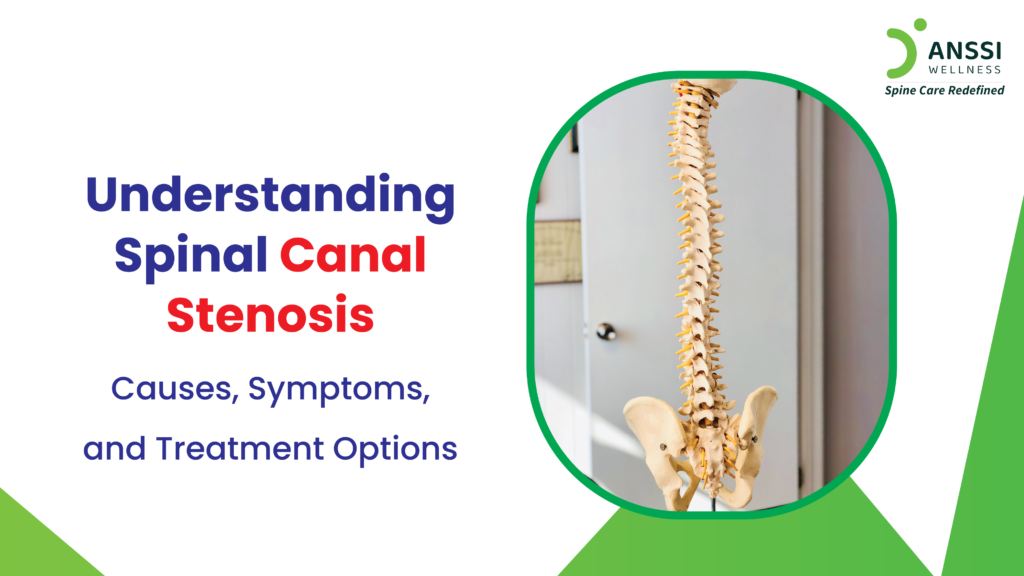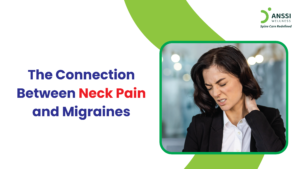Spinal canal stenosis is a condition that commonly affects older adults due to natural degeneration. However, younger individuals can also develop spinal stenosis due to injuries or congenital factors.
It occurs when the spinal cord and nerves are compressed by the narrowing of the canal inside the spine. Spinal canal stenosis can lead to significant discomfort, reduced mobility, and a lower quality of life. If left untreated, it can cause severe pain, weakness, and difficulty walking, affecting daily activities.
However, the good news is that various treatment options, including non-surgical approaches, can effectively manage the symptoms and improve mobility. Understanding the causes, symptoms, and treatments is crucial for early intervention and long-term relief.
Causes of Spinal Canal Stenosis
Numerous factors can lead to the development of spinal canal stenosis, including:
Age-Related Degeneration
As you age, the spine naturally undergoes wear and tear. The discs between the vertebrae lose their cushioning ability, and bone spurs may form, leading to the narrowing of the spinal canal. This is one of the most common causes of spinal stenosis in individuals over 50.
Herniated Discs
Between the vertebrae, the spinal discs serve as shock absorbers. When a disc herniates, its inner gel-like substance can protrude and press on the spinal nerves, leading to pain and stenosis. This condition can result from injury, poor posture, or degenerative changes.
Arthritis
Osteoarthritis and rheumatoid arthritis can contribute to spinal stenosis by causing inflammation, thickening of ligaments, and bone overgrowth, leading to spinal canal narrowing.
Arthritis-related changes are a common reason why older adults experience spinal stenosis.
Injuries and Trauma
Accidents, falls, or sports injuries can damage the spine, causing fractures or dislocations that reduce space in the spinal canal. Even previous surgeries on the spine can sometimes lead to scarring that contributes to stenosis.
Congenital Spinal Stenosis
Some people’s spinal canals are naturally small from birth. This congenital condition may not cause symptoms early in life but can become problematic as age-related changes develop.
Symptoms of Spinal Canal Stenosis
The degree of spinal stenosis and the location of the narrowing determine the symptoms. Common symptoms include:
- Pain and Discomfort: Lumbar stenosis and cervical stenosis are two conditions that frequently cause pain in the lower back and neck, respectively. It can be dull or sharp and may worsen with prolonged standing or walking.
- Numbness and Tingling: Patients may experience numbness, tingling, or a “pins and needles” sensation in the legs, feet, arms, or hands, depending on the affected nerves.
- Weakness in Muscles: Spinal stenosis can lead to muscle weakness, making it difficult to carry out daily tasks like walking, climbing stairs, or gripping objects.
- Difficulty Walking or Balancing: Lumbar stenosis can cause leg pain or weakness, making it challenging to walk long distances. Some people experience relief when bending forward, as it temporarily opens up space in the spine.
- Bladder or Bowel Dysfunction (Severe Cases): In severe situations, spinal stenosis may result in loss of control over the bowels or bladder. This is a medical emergency requiring immediate attention.
Treatment Options for Spinal Canal Stenosis
While severe cases of spinal stenosis may require surgical intervention, many patients can find relief through non-surgical treatments. These approaches aim to reduce pain, improve mobility, and enhance quality of life without the risks associated with surgery.
Non-Surgical Spinal Decompression Treatment
Spinal decompression, a non-invasive treatment, is used to release pressure on the spinal discs and nerves. This treatment gently stretches the spine, creating negative pressure that allows herniated discs to retract, reducing nerve compression. Spinal decompression promotes healing and improves blood flow, providing long-term relief from stenosis symptoms.
Physiotherapy
When it comes to treating spinal stenosis, physical therapy is quite helpful. A customised physiotherapy program can help:
- Strengthen the muscles supporting the spine
- Improve flexibility and range of motion
- Reduce stiffness and enhance posture
- Teach patients safe movement techniques to prevent worsening of symptoms
A physiotherapist can guide patients through targeted exercises to maintain spinal health and prevent further complications.
Posture Correction and Ergonomic Adjustments
Poor posture can aggravate spinal stenosis symptoms by putting excessive pressure on the spine. Posture correction strategies include:
- Keeping your back straight when standing or sitting
- Using an ergonomic chair that provides lumbar support
- Adjusting computer screens to eye level to avoid straining the neck
- Taking regular breaks from standing or sitting for extended periods of time
Making these small changes in daily habits can significantly reduce discomfort and prevent worsening of the condition.
Lifestyle Modifications
Effective management of spinal stenosis symptoms can be achieved by implementing specific lifestyle modifications:
- Exercise: Low-impact exercises that increase spinal muscle strength and mobility include yoga, walking, and swimming.
- Weight Management: Excess weight puts additional stress on the spine, worsening stenosis symptoms. Pressure on the afflicted areas can be reduced by maintaining a healthy weight.
- Techniques for Pain Management: Discomfort can be reduced by massage, heat and cold therapy, and relaxation methods including deep breathing.
About ANSSI:
ANSSI Wellness focuses on improving the quality of life for patients suffering from spinal issues, aiming to provide relief where other conventional treatments have failed. Through advanced non-surgical spinal decompression treatment, ANSSI is committed to helping patients avoid surgery and recover in a safe, effective, and compassionate environment.
Connect with ANSSI Wellness on LinkedIn, Instagram, and Facebook for expert guidance.



